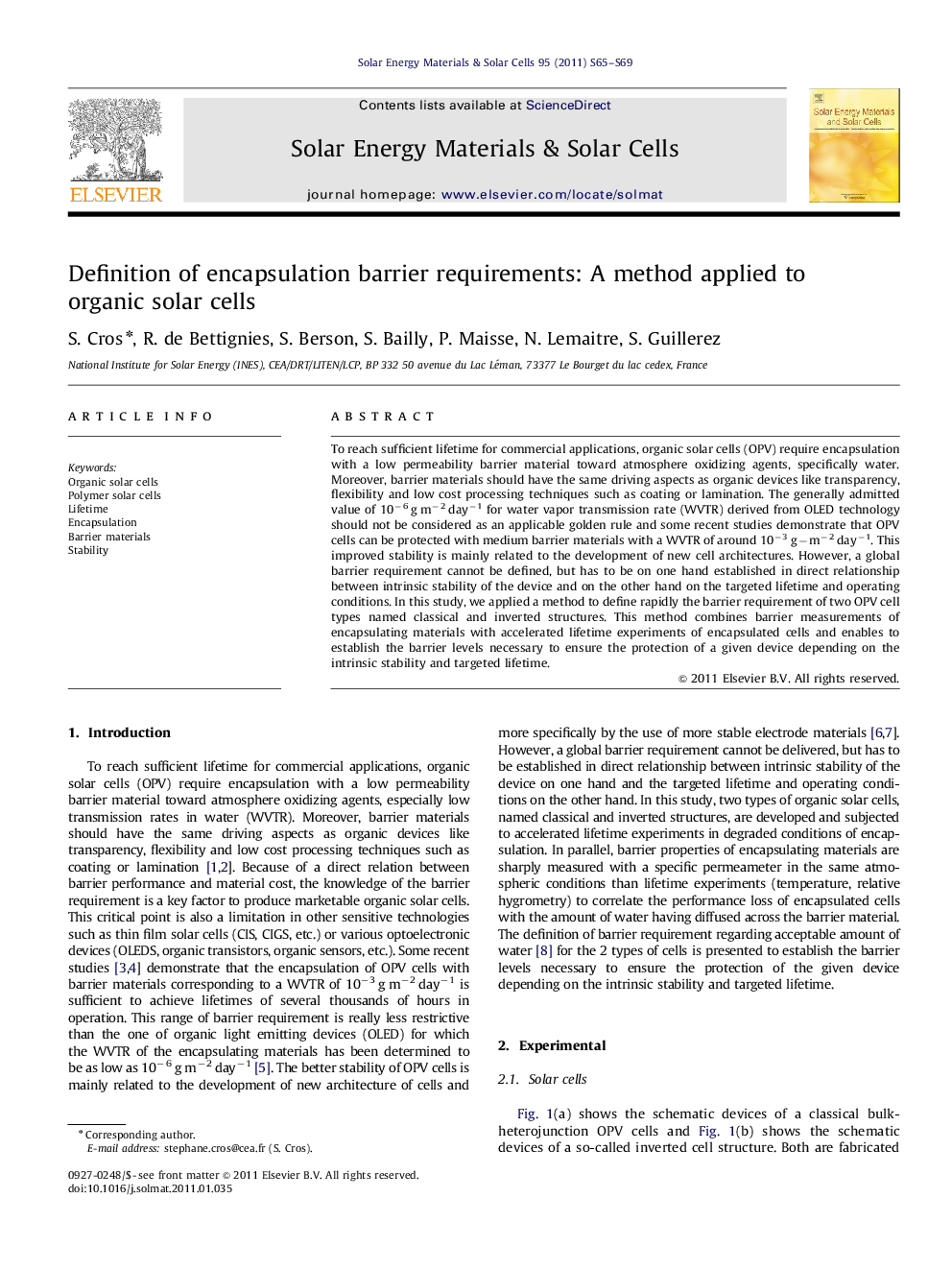| Article ID | Journal | Published Year | Pages | File Type |
|---|---|---|---|---|
| 79389 | Solar Energy Materials and Solar Cells | 2011 | 5 Pages |
To reach sufficient lifetime for commercial applications, organic solar cells (OPV) require encapsulation with a low permeability barrier material toward atmosphere oxidizing agents, specifically water. Moreover, barrier materials should have the same driving aspects as organic devices like transparency, flexibility and low cost processing techniques such as coating or lamination. The generally admitted value of 10−6 g m−2 day−1 for water vapor transmission rate (WVTR) derived from OLED technology should not be considered as an applicable golden rule and some recent studies demonstrate that OPV cells can be protected with medium barrier materials with a WVTR of around 10−3 g−m−2 day−1. This improved stability is mainly related to the development of new cell architectures. However, a global barrier requirement cannot be defined, but has to be on one hand established in direct relationship between intrinsic stability of the device and on the other hand on the targeted lifetime and operating conditions. In this study, we applied a method to define rapidly the barrier requirement of two OPV cell types named classical and inverted structures. This method combines barrier measurements of encapsulating materials with accelerated lifetime experiments of encapsulated cells and enables to establish the barrier levels necessary to ensure the protection of a given device depending on the intrinsic stability and targeted lifetime.
Graphical AbstractFigure optionsDownload full-size imageDownload as PowerPoint slideResearch highlights► Identical conditions for barrier measurements and lifetime experiments of encapsulated OPV. ► Link between the amount of water getting in contact with the cell and the performance loss. ► Definition of barrier requirements of two OPV cell types by reverse analysis.
